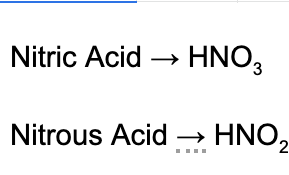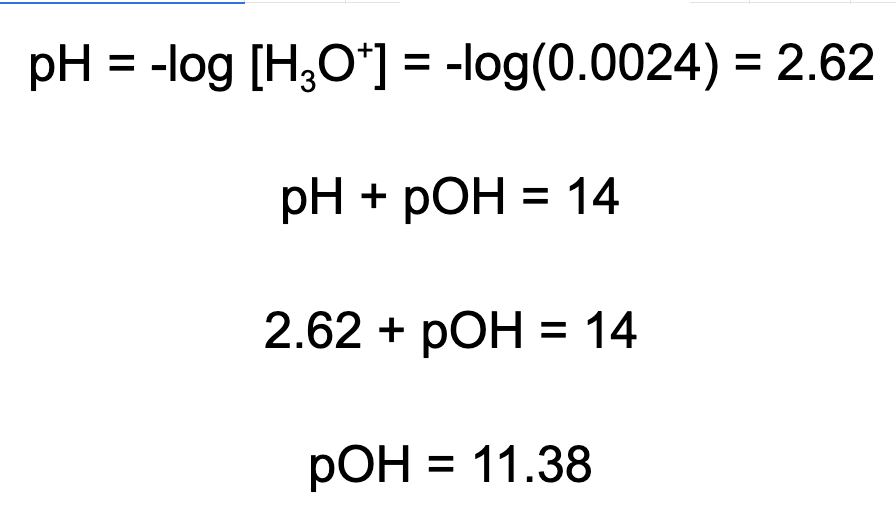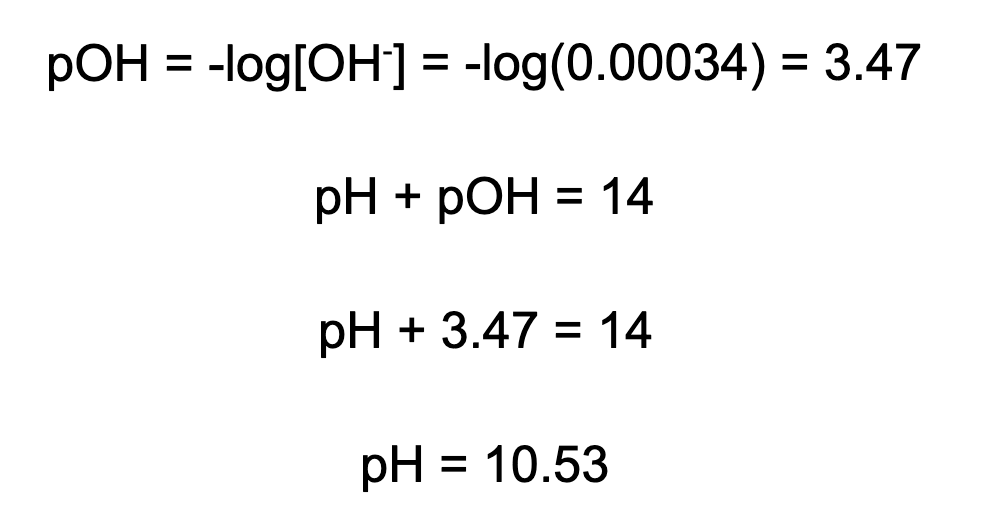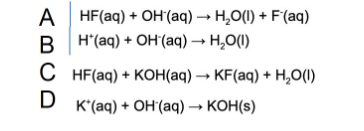AP Chemistry 🧪
269 resourcesSee Units
Answers and Review for Multiple Choice Practice on Acids and Bases
⛔STOP ! ⛔ Before you look at the answers, make sure you gave this practice quiz a try so you can assess your understanding of the concepts covered in Unit 8. Click here for the practice questions: AP Chemistry Unit 8 Multiple Choice Questions.

Image courtesy of Pixabay
Facts about the test: The AP Chemistry exam has 60 multiple choice questions and you will be given 1 hour 30 minutes to complete the section. That means it should take you around 15 minutes to complete 10 questions.
*The following questions were not written by College Board and although they cover information outlined in the AP Chemistry Course and Exam Description the formatting on the exam may be different.
1. Which of the following correctly identifies why nitric acid is a stronger acid than nitrous acid?

A. Nitric acid contains more oxygen atoms, which strengthen the bond to hydrogen.
B. Nitric acid contains more oxygen atoms which weaken the bond to hydrogen.
C. The Ka for nitrous acid is larger than the Ka for nitric acid.
D. Nitrate is a stronger conjugate base than nitrite.
Explanation: Since oxygen is very electronegative, it's able to pull electrons from the O-H bond in the molecule. Nitric acid has more electrons than nitrous acid, so it's able to do this more effectively.
Read this guide about structures of acids and bases!
2. What is the conjugate base of hydrogen phosphate?
A. Phosphate (PO4)
B. Dihydrogen Phosphate (H2PO 4-)
C. Phosphoric Acid (H2PO4)
D. Hydrogen Phosphate (HPO3 2-)
Explanation: We are looking for the conjugate base which means that hydrogen phosphate acted as an acid. Acids donate protons (hydrogen ions). Phosphate is the conjugate base of hydrogen phosphate because it has one less proton.
Read about neutralization reactions here!
3. Which of the following statements regarding methylamine is correct?

A. Methyl amine is a Bronsted-Lowry base because it accepts a proton from water.
B. Methyl amine is a Bronsted-Lowry base because it gives a proton to water.
C. Methyl amine is a Arrhenius acid because it creates hydroxide in an aqueous solution.
D. Methyl amine is a Lewis base because it makes hydroxide in an aqueous solution.
Explanation: Bronsted Lowry bases accept protons and Bronsted Lowry acids donate protons. Methyl amine accepts a proton from water and is therefore a base.
Read this introduction to Bronsted-Lowry bases!
4. In an aqueous solution, the hydrogen ion concentration is 2.4x10^-3 M. What is the pOH?

A. 2.62
B. 11.38
C. 2.40
D. 11.60
Explanation:

Review using this guide on pH and pOH!
5. What is the pH of a 0.00034 M solution of sodium hydroxide (NaOH)?
A. 3.47
B. 10.53
C. 2.47
D. 11.53
Explanation:

Review using this guide on pH and pOH!
6. What is the pH of a 0.55 M solution of acetic acid?

A. 9.00
B. 5.00
C. 11.50
D. 2.50
Explanation:

Read this guide on Weak Acids!
7. What is the net ionic equation for the reaction between hydrofluoric acid and potassium hydroxide?

Correct Answer: A.
Explanation: Since hydrofluoric acid is a weak acid, we know that it does not completely ionize in solution. The only spectator ion is potassium and it is, therefore, removed from the equation.
Review using this video on net ionic equations!
8. Which of the following has the highest pH?
A. Solution containing equimolar amounts of NaOH and HCl
B. 1.0 M solution of HCl
C. 1.0 M solution of NaOH
D. 1.0 M solution of HF (Ka = 0.00018)
Explanation: The solution containing sodium hydroxide has the highest pH. Sodium hydroxide is a strong base and therefore makes the solution's pH high.
Read this guide on pH!
9. Which of the following combinations of substances is a buffer solution?

Correct Answer: D.
Read this introduction to buffers!
10. 25.0 mL of 1.0 M acetic acid is mixed with 25.0 mL of 1.0 M sodium hydroxide. What is the resulting pH?
A. pH = 7
B. pH > 7
C. pH < 7
D. pH = 0
Explanation: This reaction is at it's equivalence point. The pH at equivalence point of a weak acid- strong base titration is above 7.
Read this guide on acid-base titrations!
11. A solution is prepared such that the concentration of formic acid is 0.024 M and the concentration of sodium formate is 0.103 M. What is the pH of the reaction mixture?

A. 7.00
B. 9.62
C. 1.62
D. 4.38
Explanation:

Read this guide on the Henderson-Hasselbalch Equation!
12. Which of the following salts is the most acidic?

Correct Answer: B.
Explanation: The only solution that contains an acidic proton is the ammonium chloride. When it dissociates in solution, the ammonium ion decreases the pH of the mixture.
Read this guide on pH!
13. Which of the following would be the best indicator to observe a neutralization reaction between KOH and HBr?
A. Methyl Orange (pKa = 4.95
B. Phenolphthalein (pKa = 9.4)
C. Thymol Blue (pKa = 1.65)
D. p-Nitrophenol (pKa = 7.2)
Explanation: The most appropriate indicator is the one with a pKa closest to the desired pH. Therefore since this is a strong acid strong base titration, the desired pH is closest to 7.
Read this guide on acid-base titrations!
14. What is the concentration of 1.55 M NaOH is required to titrate 24 mL of a 0.75 M HI solution?
A. 11.6 mL
B. 49.6 mL
C. 11.6 L
D. 49.6 L
Explanation: NaOH and HI react in a 1 mol: 1 mol ratio. Using the titration equation one can determine the volume of NaOH required to titrate the solution.
Read this guide on acid-base titrations!
15. When a small amount of HCl is added to a solution containing equimolar amounts of NaF and HF, which of the following statements is true?
A. [NaF] < [HF] because the HCl reacts with the conjugate base.
B. [NaF] > [HF] because the HCl reacts with the conjugate base.
C. [NaF] < [HF] because the HCl reacts with the conjugate acid.
D. [NaF] > [HF] because the HCl reacts with the conjugate acid.
Explanation: HCl, a strong acid, reacts with NaF. This decreases the concentration of the NaF while increasing the concentration of HF. The fluoride ion is the conjugate base of HF.
Read this introduction to acid-base reactions!
What can we help you do now?
- 🔍Check out all of the resources for AP Chem Unit 9
- 🦘Jump to AP Chem Unit 9 Multiple Choice Questions
- 🤝Connect with other students studying AP Chem with Hours
Browse Study Guides By Unit
⚛️Unit 1 – Atomic Structure & Properties
🤓Unit 2 – Molecular & Ionic Bonding
🌀Unit 3 – Intermolecular Forces & Properties
🧪Unit 4 – Chemical Reactions
👟Unit 5 – Kinetics
🔥Unit 6 – Thermodynamics
⚖️Unit 7 – Equilibrium
🍊Unit 8 – Acids & Bases
🔋Unit 9 – Applications of Thermodynamics
✏️Frequently Asked Questions
✍️Free Response Questions
🧐Multiple Choice Questions
📆Big Reviews: Finals & Exam Prep

Fiveable
Resources
© 2023 Fiveable Inc. All rights reserved.